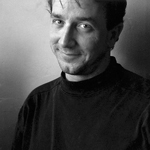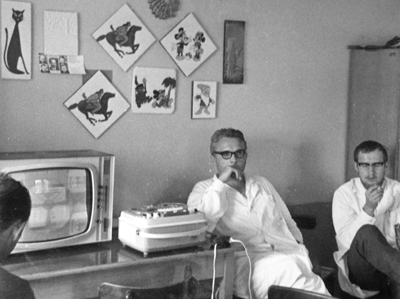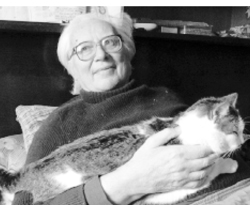
LSD in Prague: A Long-Term Follow-Up Study R.M. Crockford IN the Czech language, the city of Prague is Praha. Derived from prah, the word for 'threshold,' the name fits. This legendary capital is not just a gateway between Eastern and Western Europe, but also a historic entry point into the exploration of the mind: between 1956 and 1974, some of the largest clinical use of LSD anywhere took place in Prague, involving as many as 700 psychiatric patients and volunteers in more than 6,000 sessions. Long-term follow-up studies are crucial to establishing the safety and efficacy of psychedelic compounds. For that reason, MAPS recently provided me a $2,000 grant to track down these Czech patients. Last fall and this spring, I found and interviewed a dozen of them - and it turned out that nearly all said they had been helped by LSD psychotherapy, more than 30 years after they experienced it. "Soon,
the gateway
of Prague
may reopen
to wider
psychedelic
research."
Some of these patients responded to classified ads MAPS placed in newspapers, and others were located by interviewing some of the approximately 40 Czech doctors who worked with LSD. The research material was first provided by Sandoz, and after 1966 produced in thencommunist Czechoslovakia by a state pharmaceutical company. Unfortunately, MAPS has not (yet) found any former patients of Dr. Stanislav Grof, who introduced the Czech experience with LSD to English readers in such books as Realms of The Human Unconscious (1970). Still, it did find others who were transformed by the type of high-dose, mystical psychedelic therapy that Grof helped pioneer. The most dramatic story was that of Miroslava S., a cheerful 69-year-old grandmother, and devout Catholic. She told MAPS that in 1967 she was catatonic with depression and terrified of making love with her husband, until she had three psychedelic sessions with Dr. Boris Merhaut:  The Czech LSD program was primarily conducted at a sanatorium in Sadská (a small town east of Prague) and directed by Dr. Milan Hausner (pictured center). As many as 30 psychiatrists and psychologists received training in LSD therapy at Sadská, and many of them still speak positively about its effectiveness. * * *
The third session, the last, was in Dr. Merhaut's apartment. Before he gave me the drug, he made me recite a prayer, many times, until I knew it by heart. 'Come sacred almighty God, fill my heart with your love, let me dissolve in my life, let not my will but your will to become.' I don't know where the prayer came from, perhaps it was his own. But he knew exactly what he was doing. He was a very spiritual man. Then they gave me the drug. ... [A]fter they injected it, it was very strong. I was paralyzed. I could hear everything, but I couldn't speak. They were worried that they gave me too much. I could hear them having lunch, the knives and forks on the plates, but I couldn't say anything, for four hours. After a while, I started to move. For some reason, I really wanted to go to the door. So I crawled across the floor, and onto a space between the doors of the apartment, onto the threshold. I sat there for a while, curled up like a fetus, and Dr. Merhaut understood that I felt like I was about to be born. He got a blanket and put it around me. And then I laid down flat on the floor, and ran my hands along the length of my body. I felt like I was shedding my skin, like a caterpillar becoming a butterfly. Everything bad left me. Dr. Merhaut's wife looked like an angel. I felt new, completely free, full of love for my children, my husband, the whole world. The pain in my legs was gone, myhands were no longer dead. It was as if a rope that had always been wrapped around my body had been cut and thrown away. * * *
Generally, Czechs are among the most atheistic peoples in Europe, so it is perhaps not surprising that much of the LSD work in their country was more psychological, involving low-dose psycholitic therapy. The Czech LSD program was primarily conducted at a sanatorium in Sadska (a small town east of Prague) and directed by Dr. Milan Hausner. As many as 30 psychiatrists and psychologists received training in LSD therapy at Sadska, and many of them still speak positively about its effectiveness. 'It's very good for addictive personalities,' said Dr. Jan Sikora, who currently practices addiction medicine. In the early 1970s he treated five severe alcoholics with LSD - all of whom participated only because they wanted to prove the drug was 'useless' - 'and they were the only patients who abstained from alcoholism for many years.' Hausner himself principally used LSD to treat neurosis and depression in more than 300 patients, in more than 3,000 sessions. In 1970 he did a follow-up study with 42 Sadska inpatients from 1967. Sixty percent reported their general health had improved, and 91 percent had at least one symptom 'very improved permanently. ' He did not follow up with his outpatients, but MAPS was able to locate four of them. All participated in Hausner's 'weekend therapy,' in which pairs of patients took turns guiding each other through LSD sessions on alternating Saturdays, followed by group discussions. Their reviews of this therapy were mixed. Several said it was unpredictable (perhaps due to the guides' inexperience) and scheduled too frequently; one female patient said she experienced disturbing flashbacks for several years afterward. Nevertheless, all four reported benefits from examining the suppressed memories and feelings the drug unleashed. "Long-term
follow-up studies
are crucial
to establishing
the safety
and efficacy of
psychedelic
compounds."
'I think it's a wonderful method, because it really is like a concentrated psychoanalysis,' says Pavel C., a 57-year old TV director who says Hausner's therapy helped him resolve sexual 'confusion ' he suffered in 1971. 'I tried analysis later when I came to America, and I was unable to talk and I was blocked all the time. [At Sadska] they gave you that shot, and 15, 20 minutes later you were talking for the next five, six hours.' The communist regime ceased production of LSD and stopped such therapy in 1974, during the strict 'normalization' that followed the 1968 Soviet invasion. Hausner died in 2000, but his work lives on: Czech national television recently screened Man Is Not Dying of Thirst, a stylish 1970 documentary film about LSD therapy on which Hausner served as a consultant, and in 2002 and 2005 galleries in Prague displayed his patients' artworks, which are stored in the archives of the Czech Academy of Sciences, along with his personal files. Czech scientists also conducted dozens of LSD experiments during the '60s and '70s, and an entire book, Personality and Creation (1973), is devoted to the effects of the drug on a famous group of Prague artists. The Czech military was also interested in the drug. In 1967, doctors tested the abilities of officers to plan a response to a military attack under LSD - they sat around laughing instead - in case it was used as a weapon by the United States. (A film of this experiment is on YouTube.) Other experiments involving civilians were conducted at Prague's Stresovice military hospital. The filmmaker, Jan Svankmajer, has written that he was traumatized by his experience there, but MAPS also spoke with Jirina S., a feminist scholar who said her experience was positive: 'It invoked in me a greater respect for all people, even politicians.' Rumor has it that prominent dissidents - and an anti-drug crusader - also participated in these experiments, which MAPS is currently investigating. “I felt new, completely
free, full of love for my
children, my husband,
the whole world. The
pain in my legs was
gone, my hands were no
longer dead. It was as if
a rope that had always
been wrapped around
my body had been cut
and thrown away."
 Dr. Boris Merhaut (pictured here in 2007) facilitated many of the LSD-assisted psychotherapy sessions in communist Czechoslovakia. Between 1956 and 1974, more than 420 patients underwent at least 5,100 LSD-assisted psychotherapy sessions with LSD produced at a state-owned pharmaceutical company. Considering the rich history of LSD therapy in the Czech Republic, is it likely to be renewed? Unfortunately a majority of Czechs have told surveys that they inherently dangerous, and the Czech medical establishment has placed its faith in tranquilizers and antidepressants instead of psychodynamic treatments. However, a graduate student in Charles University's school of social work plans to build on MAPS' research with a formal LSD patient follow-up study to present to the Czech government. Doctors at the Prague Psychiatric Center are already conducting experiments using ketamine, and another physician there, Dr. Tomas Palenicek, is negotiating with the Czech FDA to develop a study with 2-CB. Soon, the gateway of Prague may reopen to wider psychedelic research.¥ R.M. Crockford is a former staff writer for The Prague Post and has published several magazine articles about the history of LSD therapy in Canada. |
||
| < Return to Table of Contents: - Spring/Summer 2007 "The Chrysalis Stage" | ||